Most of the painted havelis of Bhiwani are forgotten and in ruins. To keep them alive for the coming generations, a resident artist captures them on film
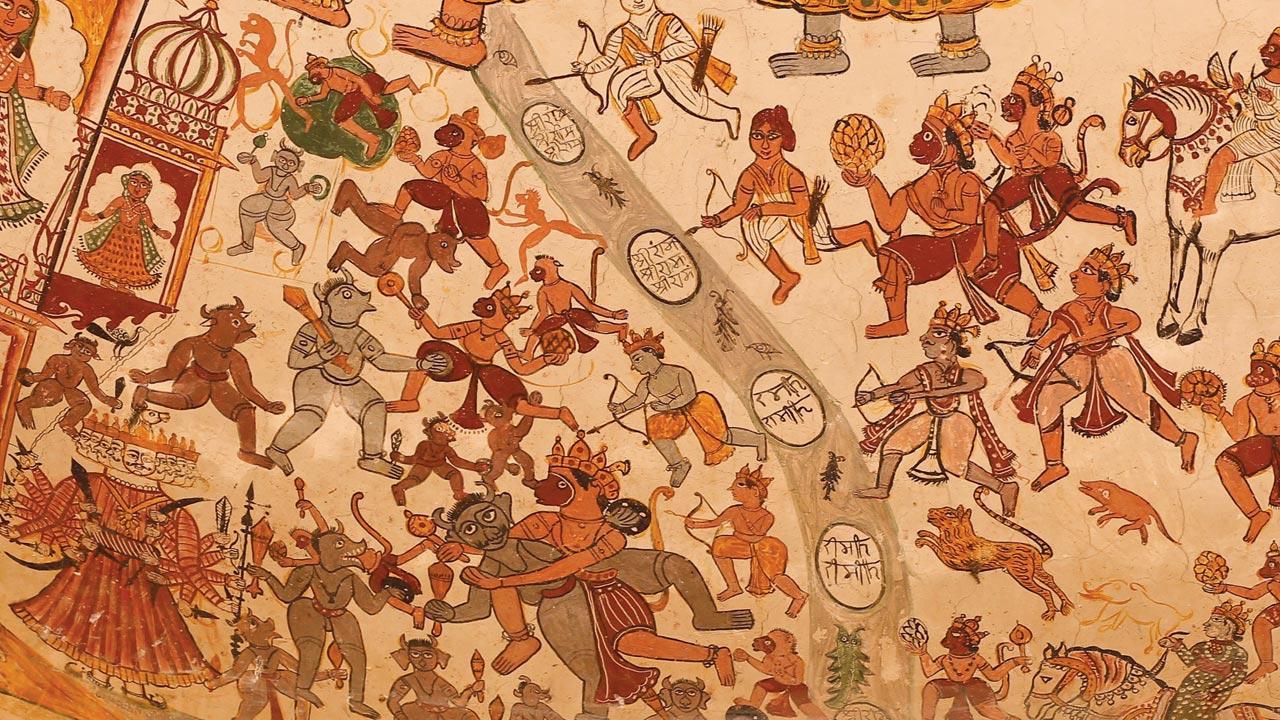
An intricately-designed painting of war between the armies of Rama and Ravana as depicted in Rramayana
His daily walk from his home to a local school in Bhiwani, Haryana, was long and hot. The town he lived in wasn’t called Chhoti Kanshi only because it was blessed with unique art and architecture. It also had numerous temples and havelis, and making his way through them was time-consuming. Ram Pratap Verma was lucky to have enjoyed this walk. In fact, he didn’t just walk past the structures, he sauntered in. “All you are left with today is a dusty street and a few havelis that have seen better days.
ADVERTISEMENT
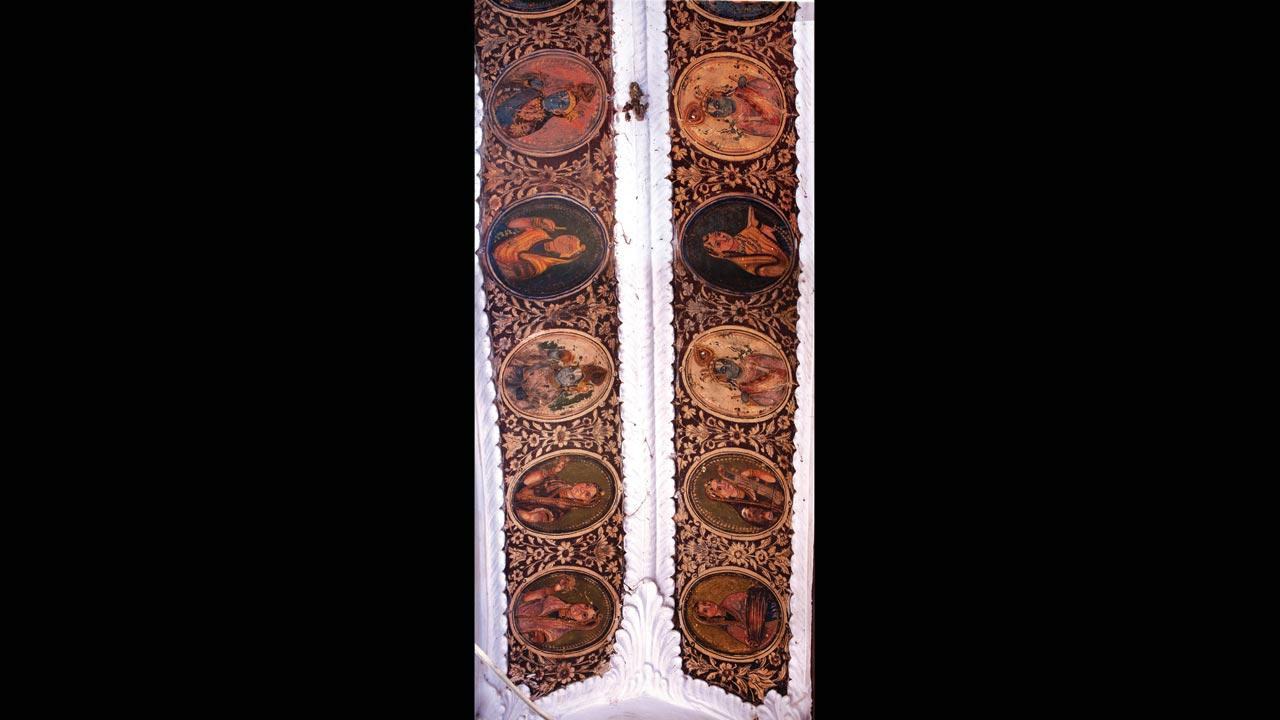 Portraits of human figures made on the ceiling of a haveli
Portraits of human figures made on the ceiling of a haveli
Each haveli once had a massive gate, an airy courtyard, and walls on the inside and out covered with fascinating fresco-secco paintings dating back to the 18th century. They were made with such intricate detail that it was overwhelming to take it all in at once. Kabhi kabhi mein school tak pohochta hi nahin tha [many a time I did not end up at school at all],” confesses Verma, now 64, about the mythological-themed art.
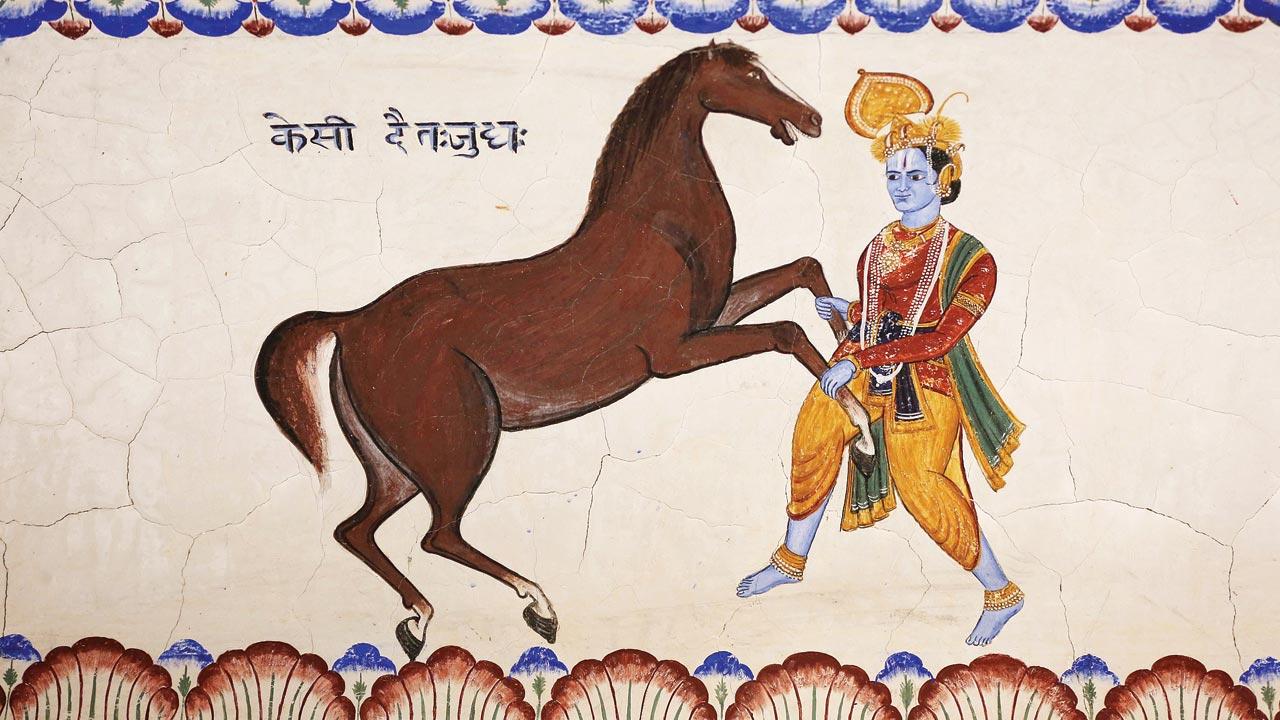 A painting of Krishna killing demons Putna, Kauvalyapitam, and Keshi in the form of a horse
A painting of Krishna killing demons Putna, Kauvalyapitam, and Keshi in the form of a horse
Archaeological excavations revealed that the chalcolithic agricultural communities had first inhabited this region as early as c.2400 BC. Since then, the region saw many changes during the Harappan civilisation, the rule of the Mughals and later, the colonial period. “Which is why you see a variety of influences from different time periods and cultures in the paintings and architecture. My research tells me that the owners of these havelis were entrepreneurs, who ran businesses away from their homes.
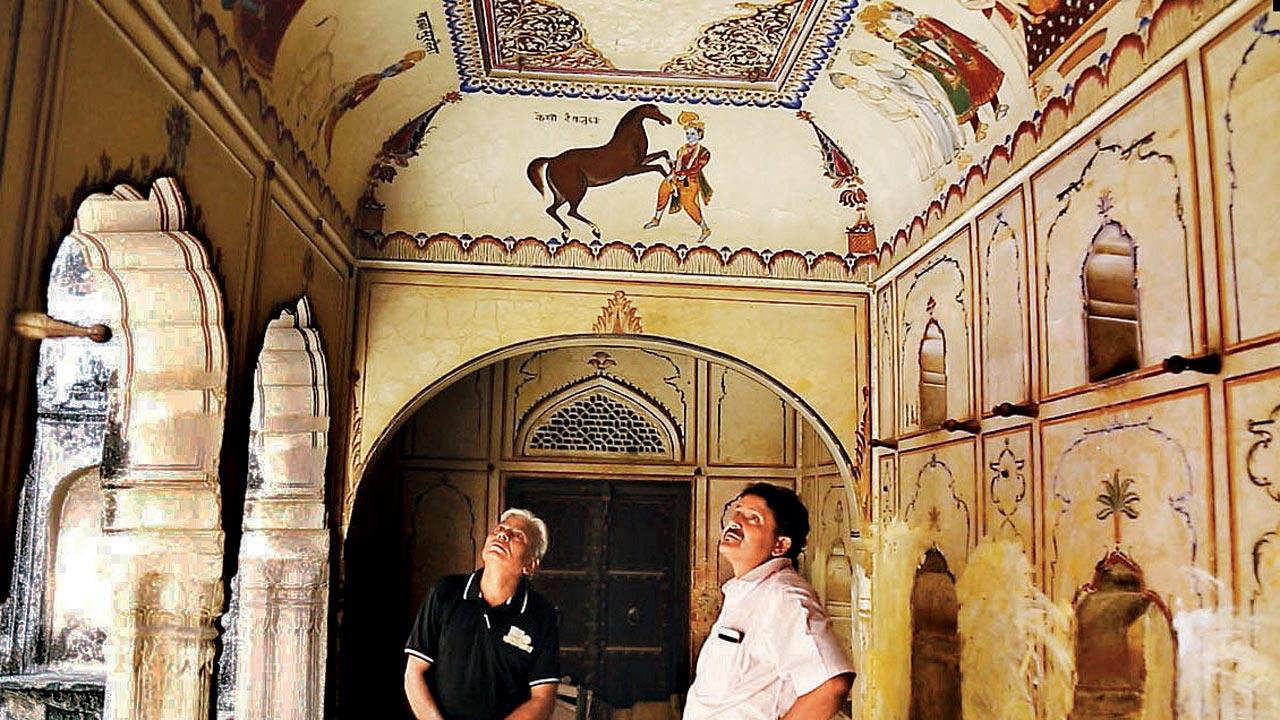 Ram Pratap Verma says that it is the sahukaas (baniyas) who owned most of these havelis in Bhiwani town
Ram Pratap Verma says that it is the sahukaas (baniyas) who owned most of these havelis in Bhiwani town
They were rich, and wanted to proclaim their status through carvings and paintings. Trained artists and local artisans worked on the structures, so all credit goes to them,” says the alumnus of Chandigarh Art College.
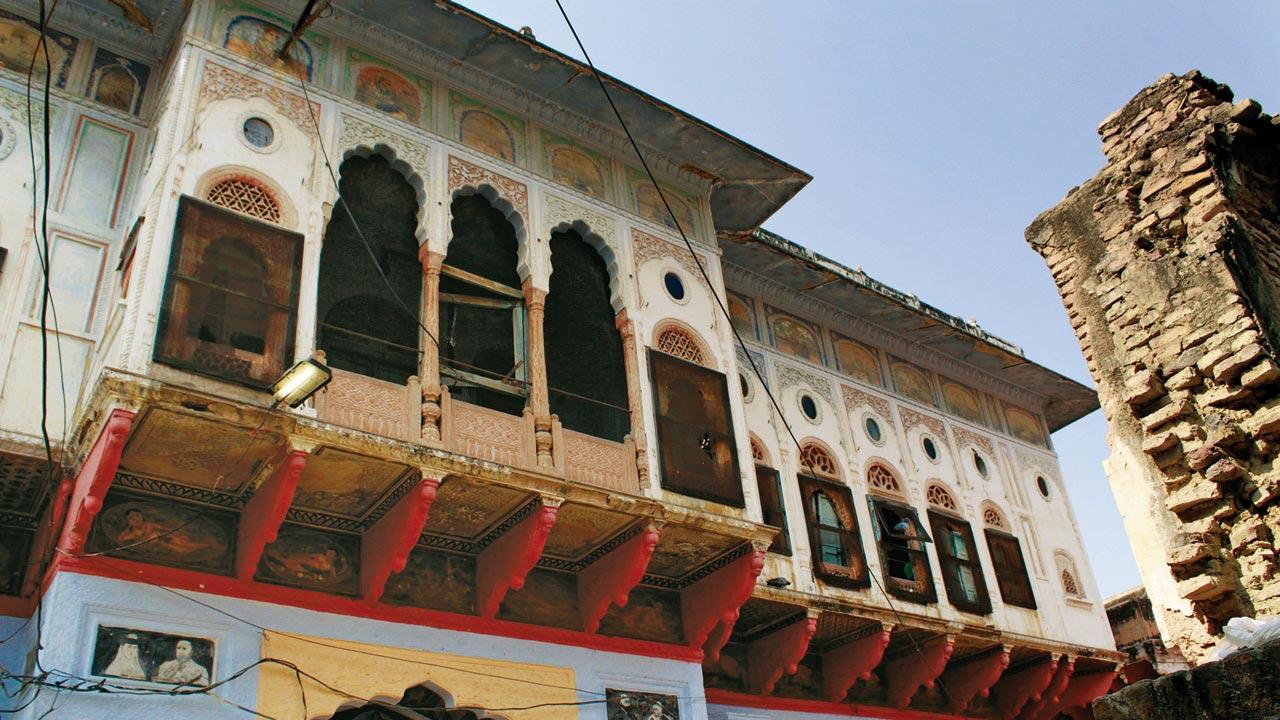 Verma returned from Chandigarh, where he was studying art, to Bhiwani in 2006 to document the fresco-secco paintings on film and via text
Verma returned from Chandigarh, where he was studying art, to Bhiwani in 2006 to document the fresco-secco paintings on film and via text
Wall Paintings: The Vanishing Treasure is a multi-pronged project helmed by Verma, which pays tribute to the havelis of Bhiwani town via a documentary and an illustrated book, recently released by Chandigarh Lalit Kala Academy. Several of the structures have ceased to exist since he first started work on the project, and more lie in ruins. The painters, he says, depicted on the walls and ceilings what they had heard and witnessed. “The more we decipher the visual language and vocabulary, the more questions arise about the remarkable skills of the painters.
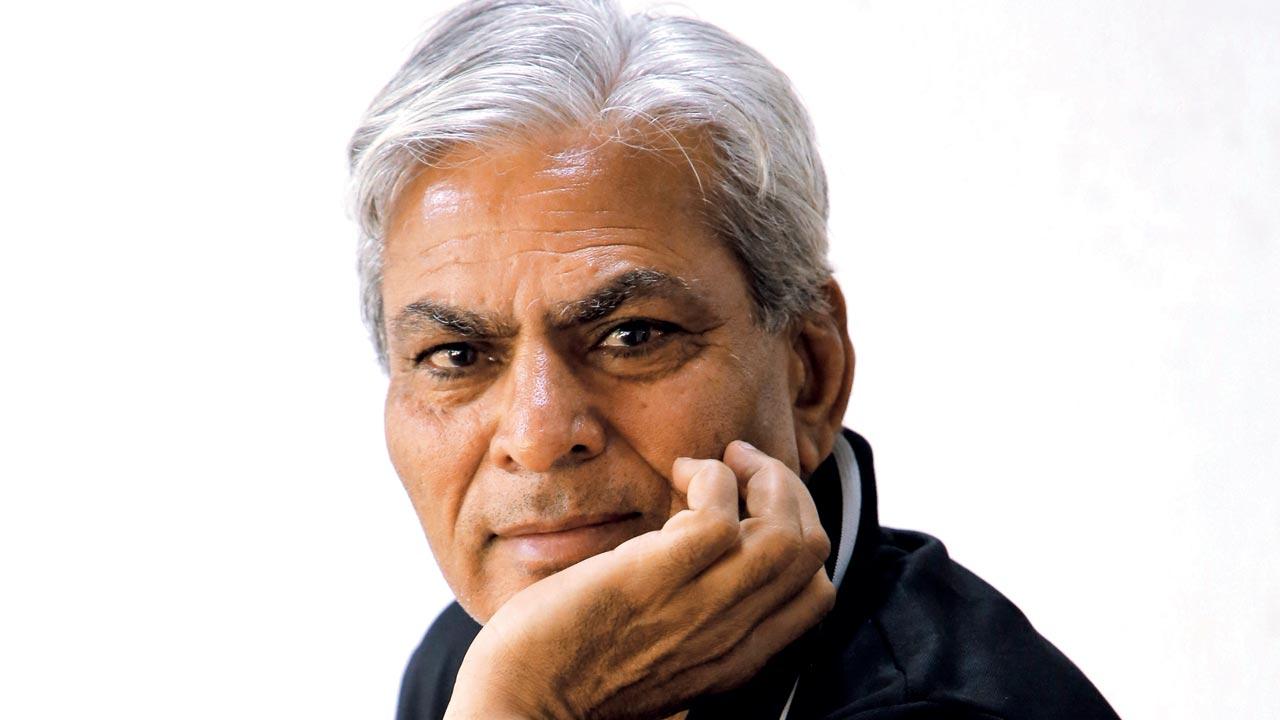 Ram Pratap Verma, artist and author
Ram Pratap Verma, artist and author
Were they trained? Did they paint of their own will? Or were they commissioned by the owners of the havelis?” says Verma, adding that surprisingly, there is no historical evidence of an art school that thrived in the region in the 19th century. While some of the work is mature and portrays fine skill, other paintings are amateurish and humourous, with disproportionate bodies and strange postures. The compositions are random, but broadly inspired by mythology, scenes of court and war. Most painters though, seem to have an unfailing sense of colour. Their primary palette included ochre, indigo and Indian red, and green was secondary. Usually, at the centre of the haveli sat a dome made on an octagonal base. This carried ornamental patterns and scenes from the Ramayana. “Some domes are also painted with scenes from Krishna-Radha’s rasa lila,” he says.
Verma’s fascination for art comes from his mother, who was an artist. She painted the walls of their home and even made monkey rattles and cloth toys for her child. “When we were in Shimla, and Chandigarh was a stop on our way back to Bhiwani, someone said that we should check out the art college. I visited the Chandigarh Art College campus and suddenly wanted to learn art professionally.” Verma’s works today sit in a variety of public and private collections.
In 2006, Verma made the journey from Chandigarh back to Bhiwani to capture the vanishing haveli fresco-secco. He says it’s a thanksgiving of sorts; gratitude that he wishes to show to the place that inspired him to pursue art. “When I returned to Bhiwani,” Verma remembers, “I could afford only a basic camera with which I began documenting the paintings. The entry gates were so grand and large, that it used to take me an hour just to study them and make notes on design.”
Verma has little hope that the government will take note of the havelis’ cultural significance. The book, however, he feels will goad art enthusiasts into action. “The colours used in these paintings are natural pigments which are still intact. Even though the sites are now derelict, forgotten and locked up, I can still see the warm colours clearly. I wished the government took this up seriously. But I didn’t do this [document] for that. My tryst with the streets lined with the havelis was destined. Mera raasta wahin tha [I was chosen to take that road],” he concludes.
 Subscribe today by clicking the link and stay updated with the latest news!" Click here!
Subscribe today by clicking the link and stay updated with the latest news!" Click here!







